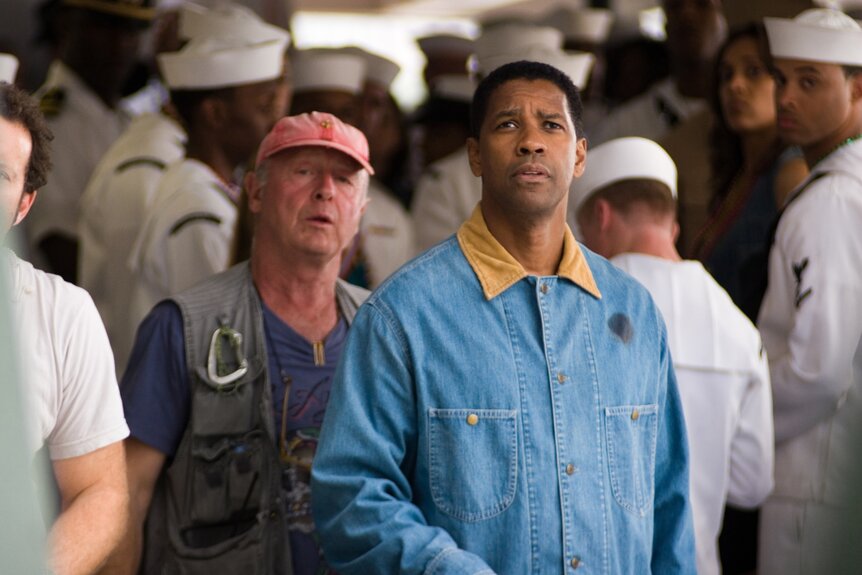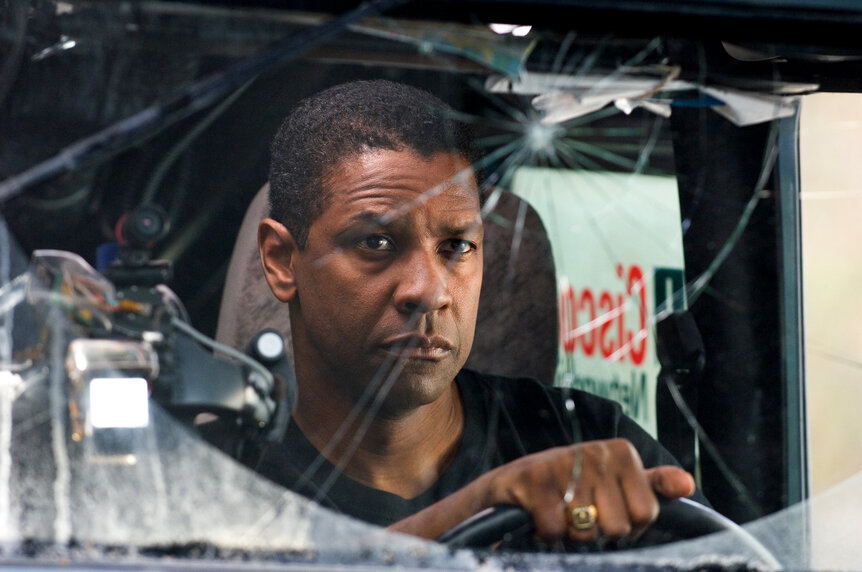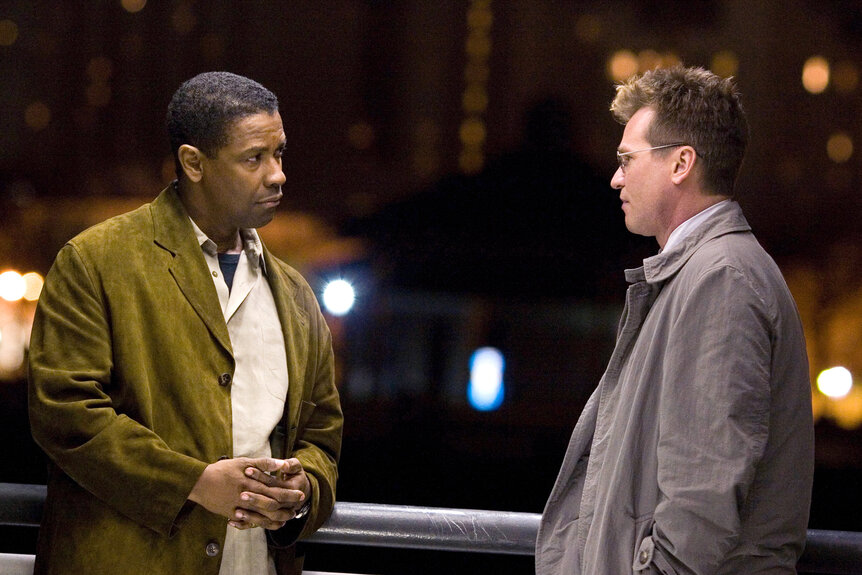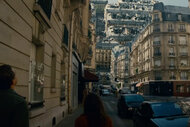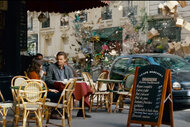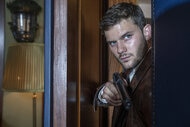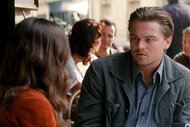Create a free profile to get unlimited access to exclusive videos, sweepstakes, and more!
Déjà Vu: Post-Katrina New Orleans Provided the Perfect Backdrop for Denzel’s Sci-Fi Thriller
Science fiction looks cool in space… but it might just look even cooler in the city that care forgot.
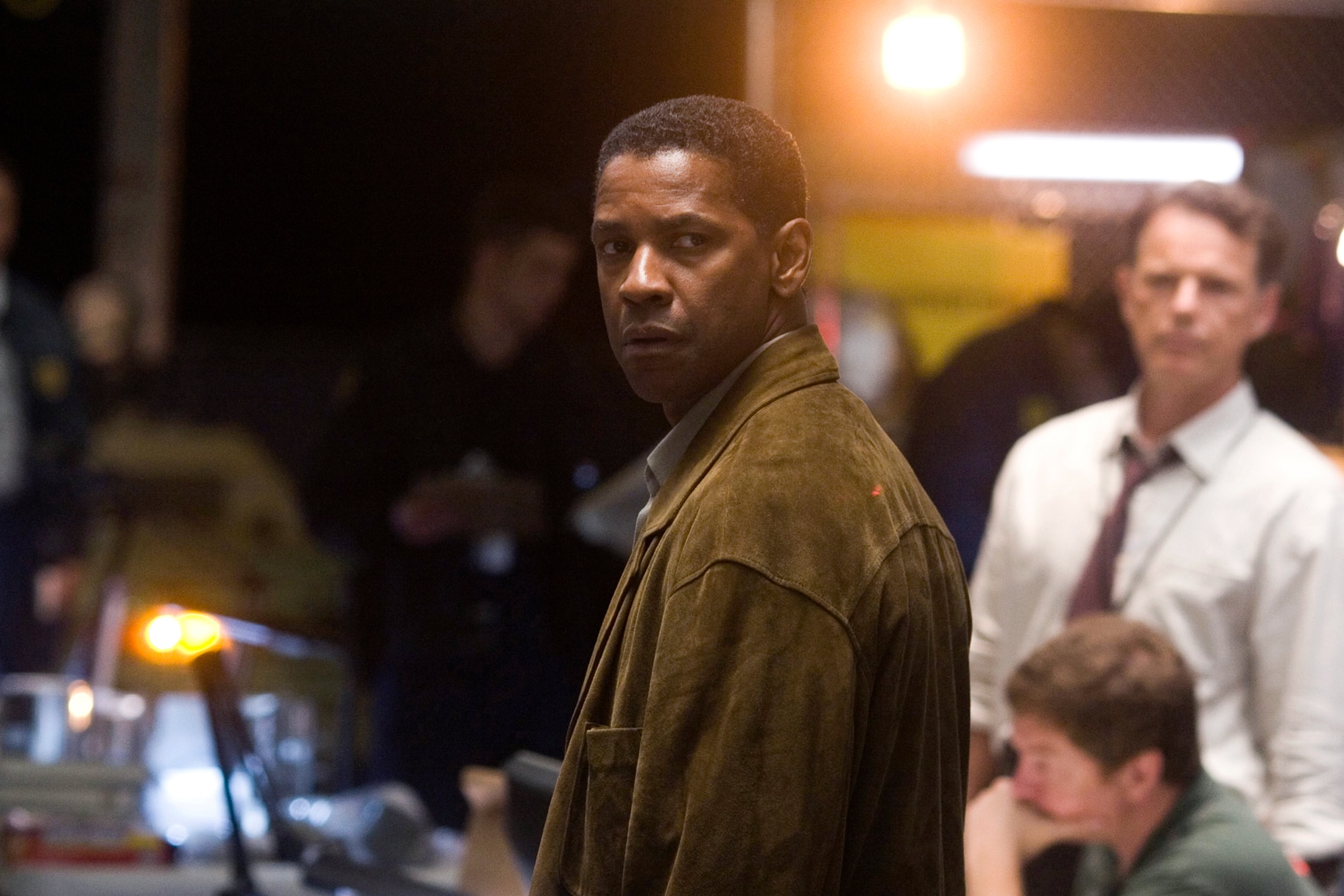
Tony Scott's Déjà Vu (now streaming on Peacock) starts with an explosive terrorist tragedy, filmed on the waters of the Mississippi River smack in front of the levee that separates New Orleans’ bustling Canal Street terminus with the low-slung skyline of Algiers on the river’s other side. Loaded with civilians and jubilant soldiers returning home from a tour aboard the USS Nimitz aircraft carrier, a crowded river ferry goes up in a broad-daylight ball of fire… with some of the city’s most famous landmarks providing the dramatic backdrop.
It’s a gripping and visually spectacular beginning for a sci-fi thriller whose post-Katrina Big Easy setting fits in like a central character — and it sets the stage for a time-bending action flick that plays with time and memory for its main character — Denzel Washington as ATF agent Douglas Carlin — in ways that recall Christopher Nolan’s Memento, right down to the notes Carlin leaves for another version of himself to discover later.
For more on time travel:
Like Father, Like Son: Déjà Vu and Tenet Are Two Sides of the Same Time Travel Coin
The Comic Book Origins You Maybe Didn't Know Behind Van Damme's Timecop
From Timeless to Quantum Leap: 9 Adventurous Time Travel TV Shows Worth Going Back to Watch
How Déjà Vu mixes mystery with time-warping sci-fi
The ferry blast leaves hundreds dead and ropes Washington’s affable, methodical ATF agent into a super-secret side of the FBI’s bleeding-edge surveillance capabilities, where an investigative team is putting the agency’s newest system — a satellite-based scanning initiative called "Snow White”— to use in reconstructing the events that led to the crime. Not far from the blast, a dead girl (Claire Kuchever, played by Mission: Impossible — Ghost Protocol star Paula Patton) washes ashore along the Mississippi, and she appears to have suffered the same tell-tale injuries as the other ferry victims… except for the fact that her fingers are missing and, well, her time of death appears to predate the explosion by at least several hours.
Carlin’s never met this girl before (and the facts don’t exactly add up), so he’s got a lot of detective work to do. Browsing around in her now-empty house, he finds some troubling clues: blood on the floorboards, bloody rags in the sink and bathroom, and a cryptic “you can save her” message spelled out in magnetic alphabet letters on the refrigerator door. But he’s well and truly freaked out when he hears his own voice, playing back to him in one whopper of a reality-smashing rug-pull, as he filters through the messages on Claire’s answering machine.
That’s unnerving enough, but the rabbit hole really opens wide when the FBI pulls Doug in on their side team of super-geeky tech detectives, who’re working the case with the help of the advanced satellite-based imaging system, Snow White. Thanks to its massive coordinated eyes-in-the-sky system, they can see and zoom in on a real-time stream of anything on Earth that took place four and-a-half days ago, though it’s all a one-shot affair. No data storage system in existence has the ability to log it all and render it for scrutinizing playback, making the real-time vantage of Snow White’s cameras — wherever they happen to be aimed — the one and only opportunity to witness and record a single isolated moment in time.
Because of its enormous data demands, Snow White is also always playing catch-up, never able to close the time gap between what it “saw” four days ago and what its operators are looking at in the present. After fingering a suspect (Jim Caviezel as a Patriot Act brand of domestic terrorist named Carroll Oerstadt), Carlin decides there might be a way to avert the entire tragedy and prevent Claire’s death if he can test the Snow White system’s most untested showpiece: a wormhole chamber that's capable, at least in theory, of sending a piece of today’s matter — maybe even a person — into the physical past.
Post-Katrina New Orleans: Grounding Déjà Vu’s sci-fi in reality
With that risky idea in mind, Carlin strips to his skivvies, climbs into the chamber, and balls up like Arnold Schwarzenegger in The Terminator to let Snow White warp him to the New Orleans of four days ago. The movie’s real fun begins when he arrives in a past where Claire’s still alive, his duplicate self is running around New Orleans somewhere, and Caviezel’s warped-patriotism style of lone-wolf terrorist is still busy laying plans to send his big, explosive message. It all lays the groundwork for a fascinating conversation between the present and the past, which fuels the action for the rest of the movie.
It’s easy to tell a science fiction story when your setting is outer space, but there’s a down-and-dirty hyper-realism that pervades the New Orleans of Déjà Vu, whether it’s in the waterlogged chaos of its opening set-piece ferry disaster or the incredible aerial pans over the city’s devastated 9th Ward. Blockbuster box office mastermind Jerry Bruckheimer produced Déjà Vu, and at least in this case, Bruckheimer’s action-savvy pedigree works to lend the movie’s more far-flung time-travel elements a measure of plausibility that helps viewers genuinely invest in what ought to be a pretty wild plot. Can both versions of Washington’s character continue to exist once he’s traveled back in time? Has his time meddling created a second timeline? Can one version of his character decipher all the subtle breadcrumbs left behind by his doppelgänger before disaster strikes twice?
Scott (who already had worked with Washington on both Crimson Tide and Man on Fire) always had a keen eye for getting the most out of his location-based movie settings, and Déjà Vu rates as one of his most effective marriages of story and place. From the humid grime of the French Quarter’s morning-after Mardis Gras flotsam right down to the cool Dillard University cap on Washington’s head, Déjà Vu luxuriates in New Orleans’ energetically dilapidated atmosphere, all while recruiting its signature visual elements to help advance the movie’s pulse-pounding plot.
Scott intuited that New Orleans is the kind of place that doesn’t need any added window dressing to look atmospheric, and his camera seems infatuated with the city’s famously strained and busted infrastructure, swooping beneath creaky bridges or down alongside the littered, muddy Mississippi shore to give an inside-operator’s peek at how the city’s high-functioning vitality thrives against nature’s constant effort to reclaim the whole thing. Paired with a killer supporting cast (Val Kilmer as a helpful FBI agent, Adam Goldberg as the FBI tech guru who explains the science behind Snow White’s surveillance magic, and Elden Henson as a nervous FBI agent who waits for the whole plan to implode), it’s a location-based formula that might just have you forgetting that you’re watching a science fiction movie about time travel… unless, that is, it’s the kind of time travel that involves dropping in on 2005 New Orleans in Hurricane Katrina’s ravaged aftermath.
However you frame it, Déjà Vu hits with maximum impact as both a time-travel flick and an action-packed mystery movie — and it nails both genres with a genuine affection for New Orleans’ dirty, delightful, and ultimately undefeated urban energy.
Catch Denzel Washington diving back to the past in Déjà Vu, now streaming on Peacock.
